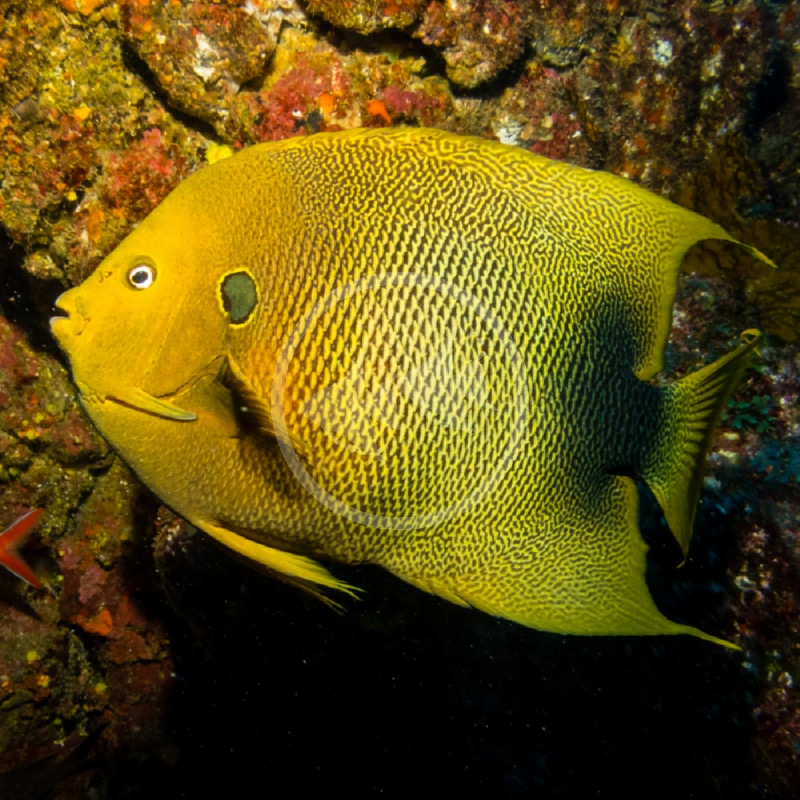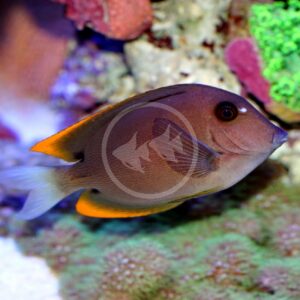


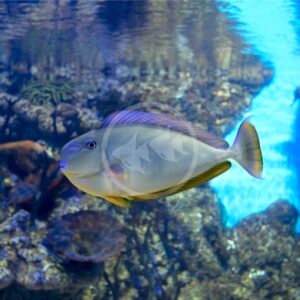
ANGEL – WEST AFRICAN Holacanthus africanus
$499.99
The West African Angelfish is truly a gem from the west coast of Africa. As a very small juvenile (< 2″), the West African angelfish is deemed a “blue phase” because it is a stunningly vibrant blue color with a yellow tail. As it grows, this blue fades into an orange-yellow to olive green coloration. A hardy, large angelfish, the West African angelfish can reach an approximate size of 15″. Given the location of its natural habitat, the West African angelfish is not frequently offered and therefore considered rare in the hobby.
Care Level: Moderate
Temperament: Semi-Aggressive
Reef Compatible: With Caution
General Description: The West African Angelfish is truly a gem from the west coast of Africa. As a very small juvenile (< 2″), the West African angelfish is deemed a “blue phase” because it is a stunningly vibrant blue color with a yellow tail. As it grows, this blue fades into an orange-yellow to olive green coloration. A hardy, large angelfish, the West African angelfish can reach an approximate size of 15″. Given the location of its natural habitat, the West African angelfish is not frequently offered and therefore considered rare in the hobby.
Diet Requirements: In the wild large angelfish are very omnivorous. A varied diet of algae, proteins, pellets, flakes, and enriched frozen foods are important for best coloration, immune function, and optimal health. Angelfish specific foods that include sponges are highly recommended.
Care Requirements: A minimum 125 gallon aquarium with 18+ inch width is ideal. Juvenile specimens can be temporarily raised in smaller quarters (no less than 75 gallons) as long as it is upgraded accordingly. This angelfish enjoys a variety of rock work and crevices to take refuge, but also should be provided with open swimming space. Typically, Holacanthus species are semi-aggressive and can be territorial in nature. If you are looking to avoid potential rough-housing with other tank-mates, it can help to introduce a more pugnacious fish near last or last. Additionally, Holacanthus often conflict with conspecifics (including other species within the genus). If you want to house multiple types of larger angelfish together, it is best to add them all at once, or closely together at the very least, and as juvenile or sub-adult specimens (which are not nearly as territorial as adults) for the best chance of success. If you want to house a dwarf angel (Centropyge) in an aquarium with a larger angelfish species, the dwarf angelfish absolutely should be added alone first and allowed plenty of time to establish itself. Ultimately, certain larger angelfish do best as the only angelfish species in an aquarium. Other compatible tank-mates include species that are semi-aggressive and active in nature, such as various pufferfish, triggerfish, and tangs. While the West African angelfish can be added “with caution” to a reef aquarium, they have been observed to nip at stony and soft corals, and clam mantles, thus making them not a very good candidate. Recommended water conditions, 72-78° F, KH 8-12, pH 8.1-8.4, salinity 1.020-1.025.
Purchase Size: Juvenile Blue: 1″ to 2″; Changing Small: 1-3/4″ to 2-1/4″; Medium: 2-1/4″ to 3-1/4″; Large: 3-1/4″ to 4-1/2″; Adult: Small/Medium: 2-1/4″ to 3-1/4″; Medium: 3-1/4″ to 4-1/4″; Medium/Large: 4-1/4″ to 5-1/4″; Large: 5-1/4″ to 6-1/4″
Note: Your item may not look identical to the image provided due to variation within species. Purchase sizes are approximate.
Dry goods orders are shipped via US Postal Service or UPS to the address provided at checkout based on the selection made in your website shopping cart. Product is carefully packed to help prevent any damage during shipping. Once processed you will receive a shipment notification via email with tracking number, and delivery notification. Please allow 48 hours for processing after your order is placed.
Perishable items (i.e. live plants, refrigerated/frozen foods) are shipped via US Postal Service 2-3 day to the address provided at checkout for a $25.00 flat rate charge. Items are packed with secure packing material and heat, cold, or Cryo packs as needed to maintain safe temperatures during transit. If one or more perishable items are in the shopping cart at checkout the $25.00 perishable shipping charge will automatically appear and need to be selected. Once processed you will receive a shipment notification via email with tracking number. Please allow 48 hours for processing after your order is placed.
Livestock (i.e. fish, invertebrates, coral) are shipped via UPS Overnight to the address provided at checkout for a $55.00 flat rate charge. Livestock is packed in insulated styrofoam boxes with secure packing material and heat, cold, or Cryo packs as needed to maintain safe temperatures during transit. If one or more livestock items are in the shopping cart at checkout the $55.00 livestock shipping charge will automatically appear and need to be selected. Livestock is shipped Monday through Wednesday ONLY (no weekend delivery is available) weather permitting, and we reserve the right to delay shipping until conditions are appropriate for safe arrival. Once your order is placed we will contact you to arrange the best shipping date based on these criteria. Someone must be available to receive the livestock order on the first delivery attempt. Once processed you will receive a shipment notification via email with tracking number. Please allow 48 hours for processing after your order is placed.
For mixed dry goods/perishable & livestock orders items will be shipped via their corresponding shipping methods outlined above. Dry goods will be shipped via US Postal Service or UPS based on your selection and checkout, while livestock will ship via UPS Overnight for a $55.00 flat rate charge. You will receive separate notifications and tracking numbers for the dry goods and livestock. Please note due to different carriers and shipping methods dry goods and livestock may arrive on different days.
Related products

TANG – BLUE HIPPO Paracanthurus hepatus
$119.99 – $299.99
CICHLID – RAM GERMAN GOLD
Mikrogeophagus ramirezi
$5.99 – $16.99


PUFFER – BLUE SPOT Canthigaster solandri
$89.99 – $149.99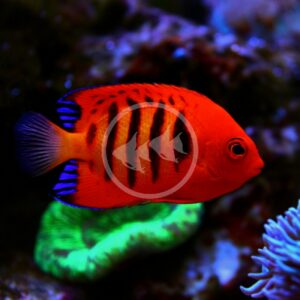

ANGEL DWARF – FLAME Centropyge loriculus
$149.99 – $199.99TANG – TOMINIENSIS Ctenochaetus tominiensis
$119.99 – $169.99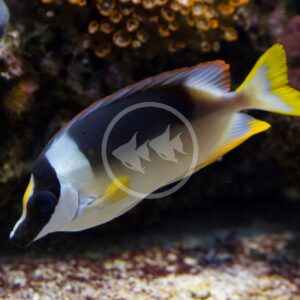

RABBITFISH – MAGNIFICENT FOXFACE Siganus magnificus
$249.99 – $349.99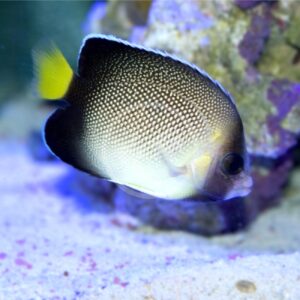

ANGEL – YELLOWTAIL CREAM Apolemichthys xanthurus
$129.99 – $179.99

